Sharing is caring!
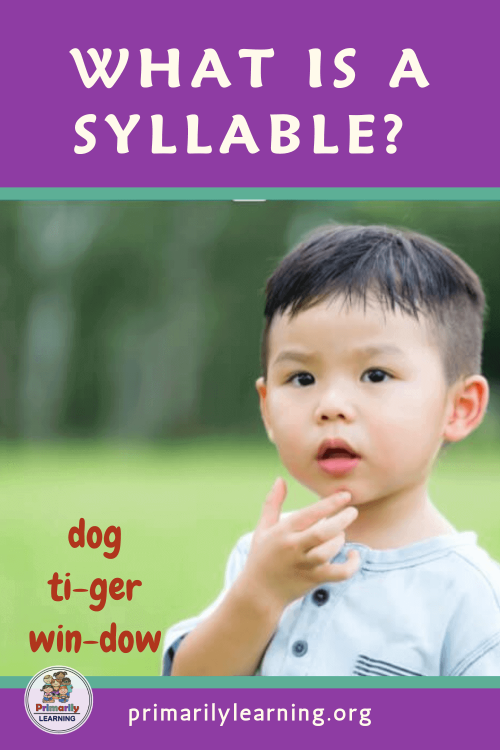

What is a Syllable?
A syllable is a unit of sound containing one or more letters that create a vowel sound.
How words are pronounced gives us a good idea of the number of syllables in a word. Usually, the spoken vowel sounds contain a written vowel or vowel combination. (Some exceptions include words like “rhythm,” where two vowel sounds are heard.) Words can have one or more vowel sounds.
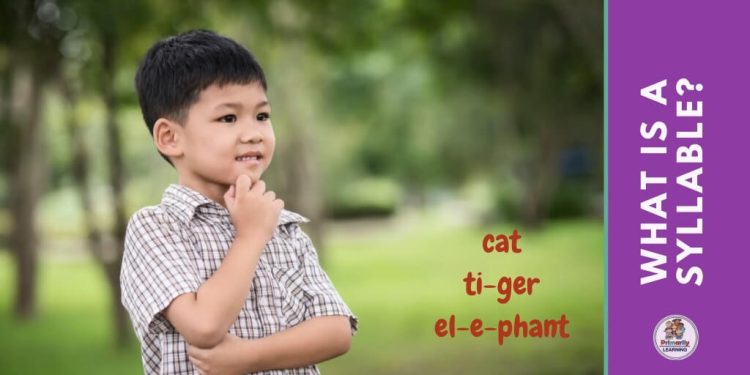
How is this helpful when learning to read and write?
Hearing the vowel sounds in words and knowing that a syllable usually contains a vowel or vowel combination is helpful to the new reader.

It’s all about pronunciation! (… and lots of practice playing with words.)
Understanding syllables can help some students learn to spell and read words correctly. Along with systematic synthetic phonics, learners are taught spelling patterns. (e.g., short word – short vowel sound (CVC); split digraph or magic ‘e’ – long vowel sound (CVCe); consonant digraphs (CCVC, CVCC, CCVVCC), ‘r’ controlled vowels (VR); consonant ‘le’ words (CLE)
Knowing the rules for syllable division can help children read words more fluently. It’s another tool.
Dividing Words into Syllables
- Divide between two middle consonants. (e.g., su-per, lad-der. whis-ker).
- Separate compound words. (e.g., cow-boy, house-boat).
- Divide between prefixes, suffixes, and root words. (e.g., un-paid, price-less, re-do).
- Never split up consonant digraphs. (e.g., th, ch, sh, wh, ph).
- Usually, divide before a single consonant. (e.g., e-qual, a-bout, i-dol). NOTE: When the first syllable has a short vowel sound (i.e., “cab-in”), the consonant is spoken with the first syllable.
- Divide before “CLE” (e.g., trou-ble, cud-dle, tur-tle)… except for words like “trick-le”.
- Yes, Reading is Complicated!
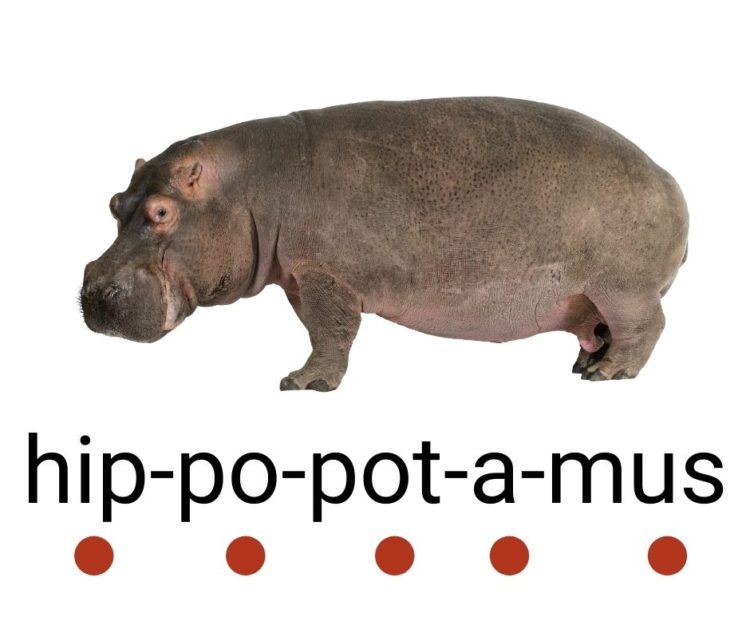
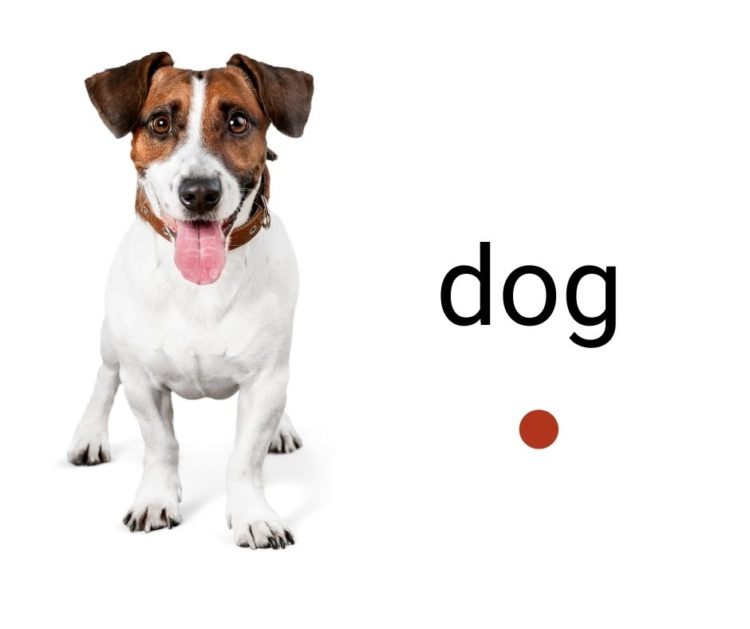

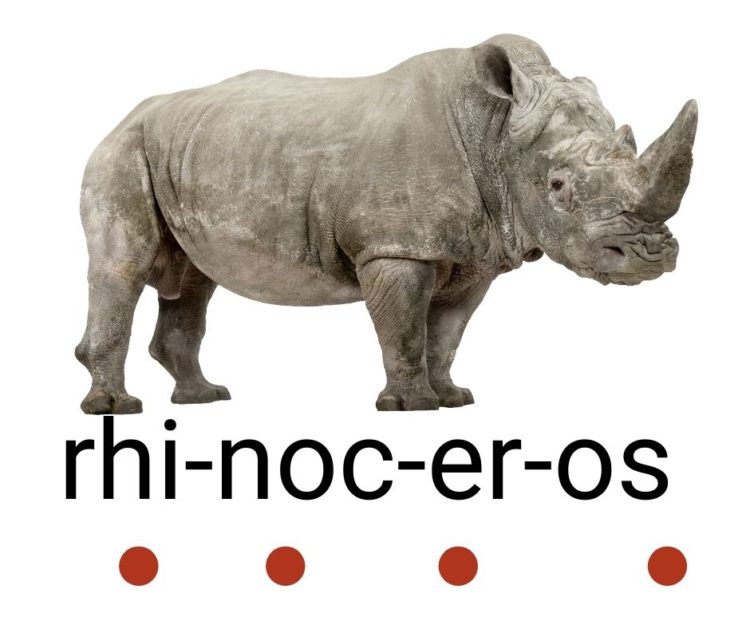

How many Syllables? What are some examples?
ONE
- ant, blue, dog, book, wish, love, light, my, go, duck, egg, run, pail, zoo, cold, boy, drum, pig, tree, come, light, have.
These words are “monosyllabic.”
TWO
- apple, cherry, window, garbage, cupcake, wheelchair, ketchup, little, music, puzzle, yoyo, wagon, happy, question, napkin, zebra.
These words are “disyllabic.” (Avoid “bisyllabic.”).
THREE
- sunflower, piano, basketball, mosquito, dinosaur, everything, operate, skeleton, kangaroo, alphabet, jellyfish, umbrella, tomato.
These words are “trisyllabic.”
FOUR
- alligator, Cinderella, television, watermelon, motorcycle, kindergarten, calculator, caterpillar, beautiful, identical, secretary, binoculars, ordinary, macaroni.
These words are “quadrisyllabic.”
Have you seen this Syllable BUNDLE?
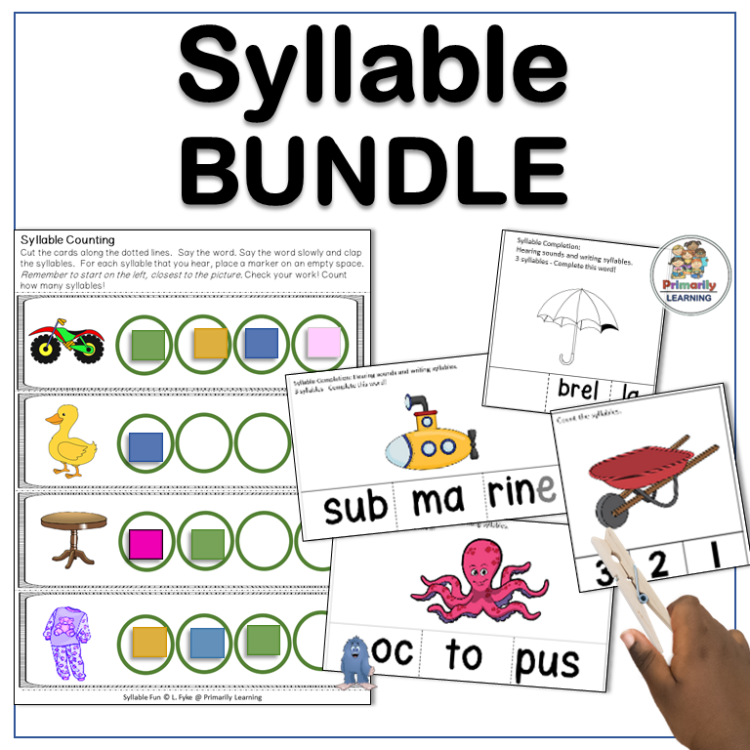
There are 6 Syllable Types
A Closed Syllable (VC) has a single vowel and ends with a consonant. The vowel has a short sound.
- in, bed, drop, lem-on, lap-top, rab-bit, drag-on, nap-kin, pup-pet, vis-it.
- fro-zen, can-dy, in-to.
An Open Syllable (V) ends with a single vowel. The vowel has a long sound.
- be, go, hi, she.
- mu-sic, bin-go, ti-ger, a-pron.
The Split Digraph or Magic ‘e’ Syllable (VCe) ends with a consonant and a silent ‘e.’ It has a long vowel sound.
- bike, kale, dime, page, kite, game, life-time.
- base-ball, tad-pole, valen-tine.
A Vowel Team Syllable (VV) contains two vowels that make one sound.
- sail, green, tie, soap, team.
- res-cue, rain-fall, drum-beat, boat-ing.
NOTE: A Vowel Team includes a Diphthong Syllable (VV) where two vowels make a special sound.
- cloud, look, food, coin, blue, foil.
- au-to, des-troy, sea-trout.
An R-controlled Syllable (VR) has a syllable followed by a single letter ‘r’. The sound is an ‘r’-controlled vowel.
- card, her, bird, cord, fur, first, purse, shirt, yard.
- var-nish, cat-er-pill-ar, ser-pent, tur-key.
A Consonant-LE Syllable (CLE) is an unaccented final syllable with a consonant followed by ‘le.’
- un-cle, ap-ple, jug-gle, can-dle, cir-cle, ta-ble.
Is there a resource available to help?
When you begin looking for ready-made pictures to sort, be sure to check out Sorting Activities from Primarily Learning.
Another great hands-on activity is How Many Syllables? Peg-It! (56 Peg It CARDS) by Primarily Learning.
To help train the kids’ ears to hear and process auditory information… Check out these Auditory Processing Task Cards that align with the Science of Reading!

Wishing you a great day!
Laurie Fyke








13 Responses
Thanks ever so much for such brilliant lessons on syllable.
You are most welcome, William! Have a great day!
Thank you very much for your thorough explanation, it was really helpful. I just have a little doubt concerning the syllabication of “elephant”: Doesn’t the second ‘e’ have a short vowel sound? Shouldn’t it be splitted “el-eph-ant”, then? Is it an exception to the rule or is there no rule at all? Thanks again, in advance.
Hello Jandro,
As you know, English is complicated! There are exceptions to rules. Regional dialects play a role in pronunciation. Note – The second e in elephant does not make the short e sound (/e/).
In the US the second e in elephant is the schwa sound /uh/. (NOTE: The a (elephant) is a schwa sound in both pronunciations.)
US/ˈel.ə.fənt/
The second e takes on the sound /uh/ as in upon.
UK/ˈel.ɪ.fənt/
In the UK the second e in elephant is pronounced /i/ as in ship.
The ph makes a /f/ sound… a single consonant sound. So this guideline would be helpful … adjusting the from obvious print to knowing that ph makes a single consonant sound.
Usually divide before a single consonant. (e.g., e-qual, a-bout, i-dol).
For more information on the letter sounds check out- https://dictionary.cambridge.org/pronunciation/english/elephant
I hope this helps. Yes, English is a complicated language created and influenced by many different languages. These syllable rules provide general guidelines that work most of the time.
Have a great day!
Laurie
Thanks so kindly for the notes taught.
You are most welcome, Daniel! Wishing you a wonderful year! Laurie
Thank you your study had helped me a lot. But part of reading & understanding of syllables, I am planning to write book sure will mention your reference.
Thank you so much, Manjushri! I am glad to have been able to help! Have a wonderful year! Laurie
I enjoyed it a lot 👍
I am glad to hear that! Have a great year! Laurie
the content is substantial
What about the words “fire” and “hire?” What are the rules surrounding these words? Does it have anything to do with r-controlled syllables? I’m trying to teach how many syllables are in them.
Hi Maddy,
“Fire” and “tire” are one-syllable magic e words, just like nine, bite, cape, hope, and Pete. The silent e makes the vowel say its name (the long vowel sound). Since there’s only one vowel sound, they’re one syllable. A quick test: put your hand under your chin and say fire. You’ll feel your chin drop once.
Some students may think fire has two syllables (fi-er), because when we say it slowly or carefully, it can sound like it has two parts. But in everyday speech, it’s pronounced as one smooth syllable.
Now compare that to flyer. This word has two vowel sounds: fly-er. The -er is an r-controlled vowel, so if you use the chin test, you’ll feel two drops—two syllables.
I hope that helps
Laurie